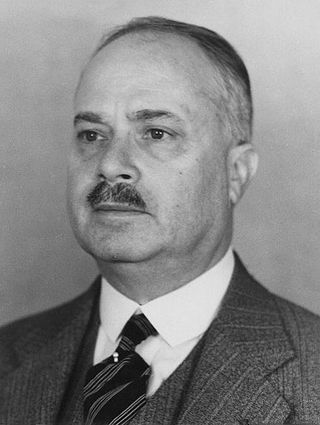Related Research Articles

A meteorite is a rock that originated in outer space and has fallen to the surface of a planet or moon. When the original object enters the atmosphere, various factors such as friction, pressure, and chemical interactions with the atmospheric gases cause it to heat up and radiate energy. It then becomes a meteor and forms a fireball, also known as a shooting star; astronomers call the brightest examples "bolides". Once it settles on the larger body's surface, the meteor becomes a meteorite. Meteorites vary greatly in size. For geologists, a bolide is a meteorite large enough to create an impact crater.

Meteor Crater, or Barringer Crater, is an impact crater about 37 mi (60 km) east of Flagstaff and 18 mi (29 km) west of Winslow in the desert of northern Arizona, United States. The site had several earlier names, and fragments of the meteorite are officially called the Canyon Diablo Meteorite, after the adjacent Canyon Diablo.

The Haviland Crater, also called the Brenham Crater, is a meteorite crater (astrobleme) in Kiowa County, Kansas.

The Canyon Diablo meteorite refers to the many fragments of the asteroid that created Meteor Crater, Arizona, United States. Meteorites have been found around the crater rim, and are named for nearby Canyon Diablo, which lies about three to four miles west of the crater.

The Meteoritical Society is a non-profit scholarly organization founded in 1933 to promote research and education in planetary science with emphasis on studies of meteorites and other extraterrestrial materials that further our understanding of the origin and history of the Solar System.

The Paragould Meteorite at 41 inches (1,000 mm) by 24 inches (610 mm) by 16 inches (410 mm) and weighing 370 kilograms (820 lb) is the second largest witnessed meteorite fall ever recovered in North America and the largest stony meteorite chondrite. It fell to Earth at approximately 4:08 a.m. on February 17, 1930.

Dante S. Lauretta is a professor of planetary science and cosmochemistry at the University of Arizona's Lunar and Planetary Laboratory. He is the principal investigator on NASA's OSIRIS-REx mission.
Nininger can refer to:
The Buseck Center for Meteorite Studies was founded in 1960, on the Tempe Campus of Arizona State University, and houses the world's largest university-based meteorite collection. The collection contains specimens from over 1,600 separate meteorite falls and finds, and is actively used internationally for planetary, geological and space science research. The Center also operates a meteorite museum which is open to the public.

Harvey Harlow Nininger was an American meteoriticist and educator. Although he was self-taught, he revived interest in scientific study of meteorites in the 1930s and assembled the largest personal collection of meteorites up to that time.
Niningerite is a magnesium–iron–manganese sulfide mineral with the chemical formula MgS that is found in enstatite chondrite meteorites. Niningerite is the magnesium-dominant analog of keilite. This mineral is named after Harvey H. Nininger.

Frederick Charles Leonard was an American astronomer. As a faculty member at the University of California, Los Angeles, he conducted extensive research on double stars and meteorites, largely shaping the university's Department of Astronomy. He received his undergraduate degree from the University of Chicago in 1918 and his PhD in astronomy from the University of California, Berkeley in 1921. Leonard was an astronomer from his teenage years, founding the Society for Practical Astronomy in 1909. In 1933 he founded The Society for Research on Meteorites, which later became known as the Meteoritical Society. He was its first president and was the Editor of the Society's journal for the next 25 years. The Society instituted the Leonard Medal in 1962, its premier award for outstanding contributions to the science of meteoritics and closely allied fields.
Oscar E. Monnig was an American amateur astronomer, acknowledged for his contributions to meteoritics.
The Beardsley meteorite is a meteorite that fell in Beardsley, Kansas, on October 15, 1929. Three samples were preserved, one collected the following day, at Michigan State University, and two collected two years later, at the Smithsonian Institution and Arizona State University.

Peter H. Schultz is Professor of Geological Sciences at Brown University specializing in the study of planetary geology, impact cratering on the Earth and other objects in the Solar System, and volcanic modifications of planetary surfaces. He was co-investigator to the NASA Science Mission Directorate spacecraft Deep Impact and the Lunar Crater Observation and Sensing Satellite (LCROSS). He was awarded the Barringer Medal of the Meteoritical Society in 2004 for his theoretical and experimental studies of impact craters.

The Grant Meteorite is a meteorite that was discovered in the Zuni Mountains, about 45 miles (72 km) south of Grants, New Mexico. It was unearthed in 1929 although the date of its original groundfall is unknown.

The Coahuila meteorite is a hexahedrite iron meteorite found in Coahuila, Mexico. The large number of fragments has led to many synonyms and many authors think that more than one meteorite is represented by the fragments. Only fragments found in Coahuila, that are hexahedrites and fall into the IIAB group should be called Coahuila meteorite.

Meenakshi Wadhwa is a planetary scientist and educator who studies the formation and evolution of the Solar System through the analysis of planetary materials including meteorites, Moon rocks and other extraterrestrial samples returned by spacecraft missions. She is director of the School of Earth and Space Exploration at Arizona State University.
Anat Shahar is a staff scientist at the Earth and Planets Laboratory, Carnegie Institution of Washington and adjunct professor at the University of Maryland. Her work uses high-pressure, high-temperature experiments and stable isotope geochemistry to understand the formation of planets in the Solar System.